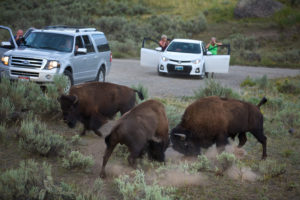I’ve written recently on self-documentation, selfhood and freedom, and how art can help people cultivate moral knowledge. In my doctoral dissertation, I explored these topics in the context of artistic self-portraiture.
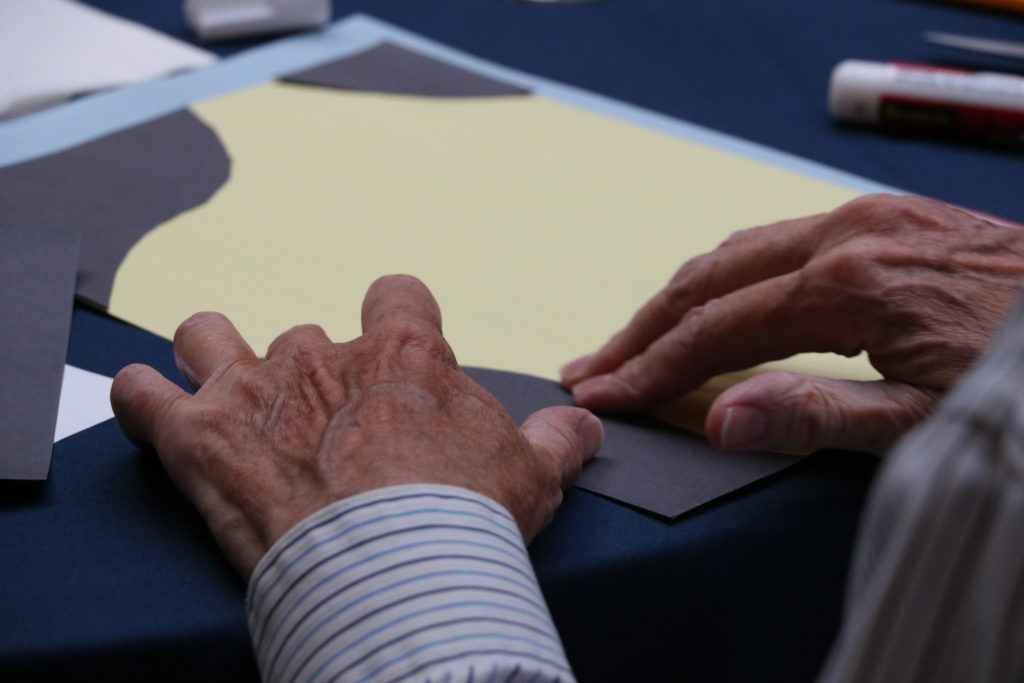
I settled on self-portraiture because I was looking for a personally meaningful, nonverbal form of document to bring information science theory forward. As it happens, the practice of self-portraiture has long been recognized and used for self-exploration, self-discovery, self-understanding, self-creation and self-care, as discussed variously in art history, art therapy, occupational therapy and other fields. When this is understood in the context of our current mental health crisis (increased depression, anxiety, suicide, and on and on) the practice of self-portraiture may be particularly useful—and urgent. In brief, I think many of our ills stem from a sense of meaninglessness, and so I understand our task to be a matter of rediscovering and cultivating personal meaning.
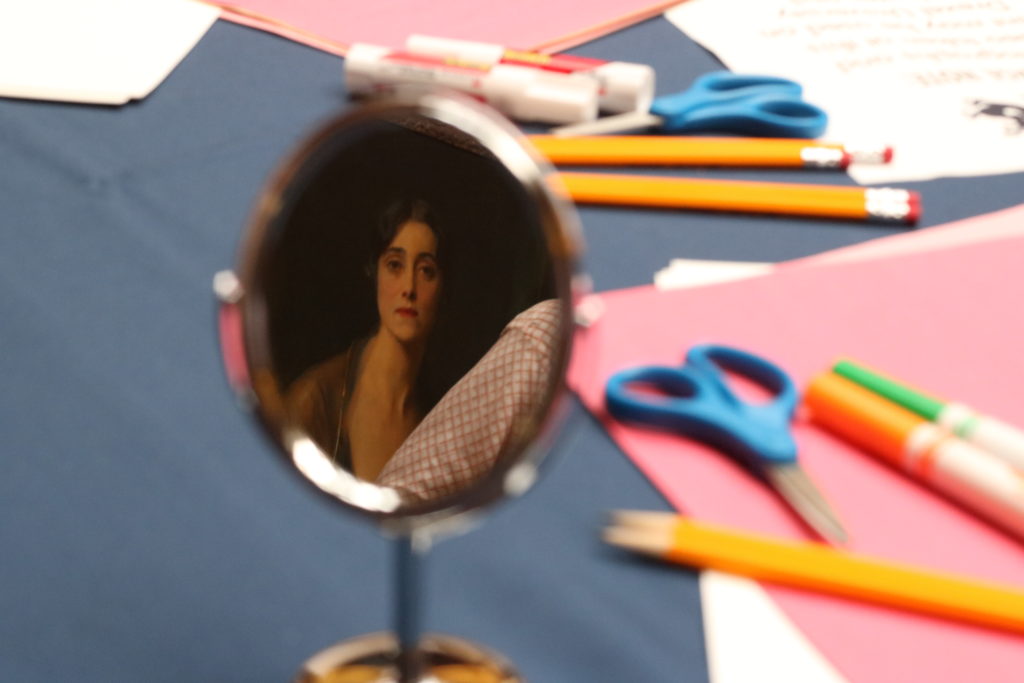
In this regard, the stories of self-portraiture that came out of my doctoral research were so powerful that I want to find ways to enable others to have such experiences. Self-portraiture is something that everyone can do. It’s a matter of engaging with an ancient technology, which sometimes in our high-tech world we forget that we have at our disposal.
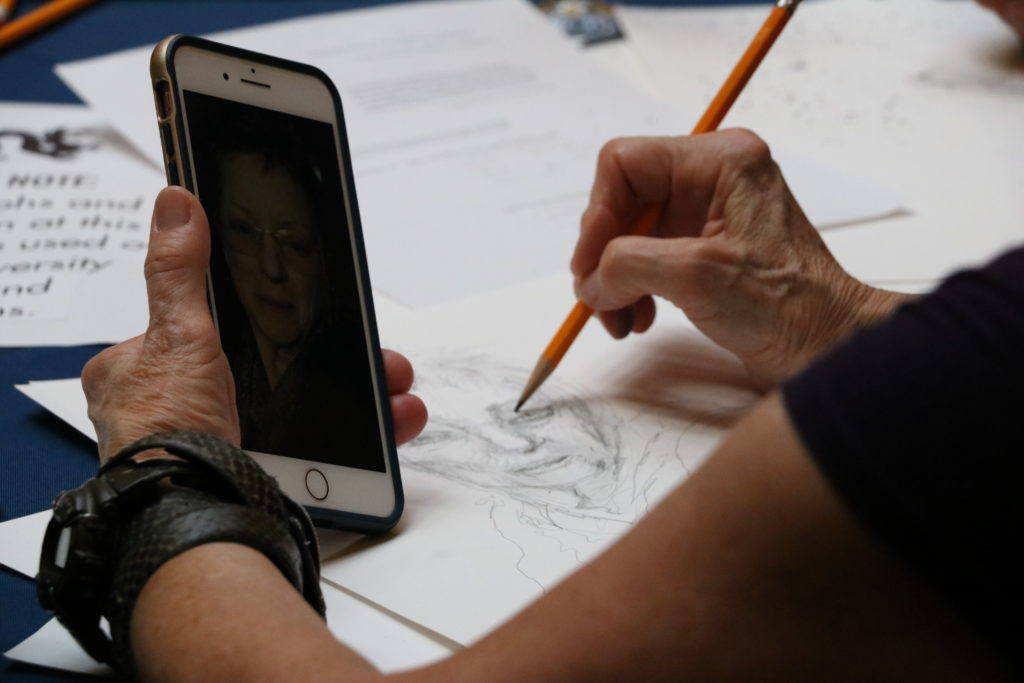
This week I was blessed to host, under the auspices of the College of Computing & Informatics at Drexel University (i.e., my college), a closing reception for the art exhibition that came out of my dissertation.
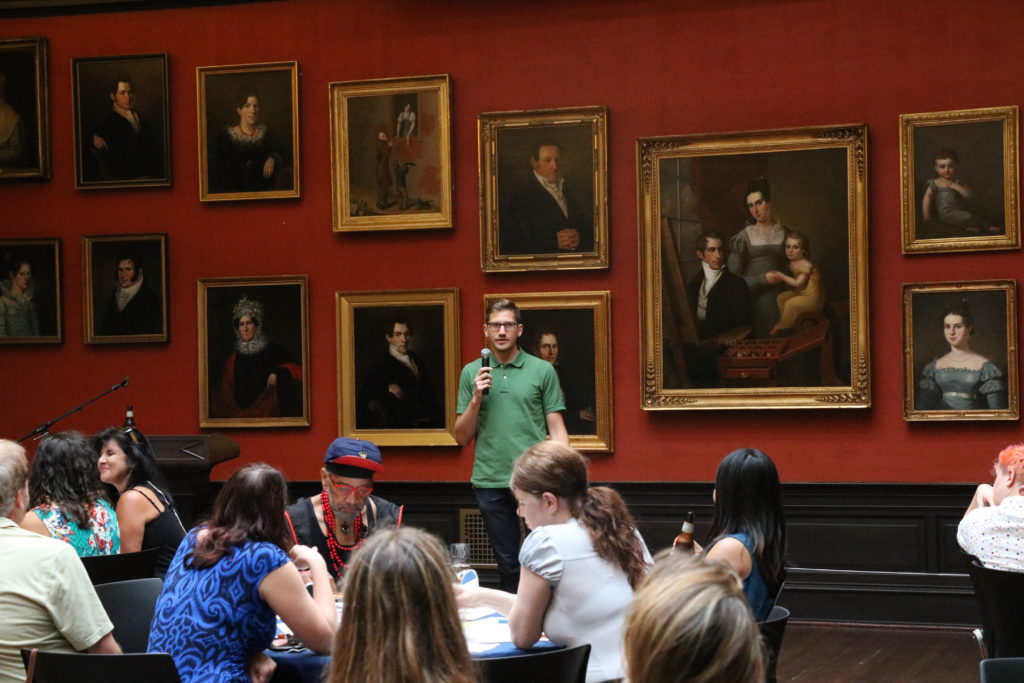
I started with a few words about my project. Justin Tyner then spoke on his experience making his stained-glass self-portrait—which he summed up, poignantly, with a poem by Nanao Sakaki:
Look! A mountain there
I don’t climb a mountain
Mountain climbs me
Mountain is myself
I climb on myself
After that, I invited attendees to create their own self-portraits. The experience began with a short personal exploration worksheet, and then attendees had at a table full of art supplies for more than an hour. Finally, Emily Addis, another of the artists in my study, led the group in a discussion and debrief.
Attendees were invited to sum up their experiences in a word. We heard: tragic, celebration, collaboration, introspection, confusion, calming, and no-self. Many learned new things about themselves. Some people shared these with the group, and others simply said, “Thank you.”
Try it for yourself. Find the worksheet here, and get started!
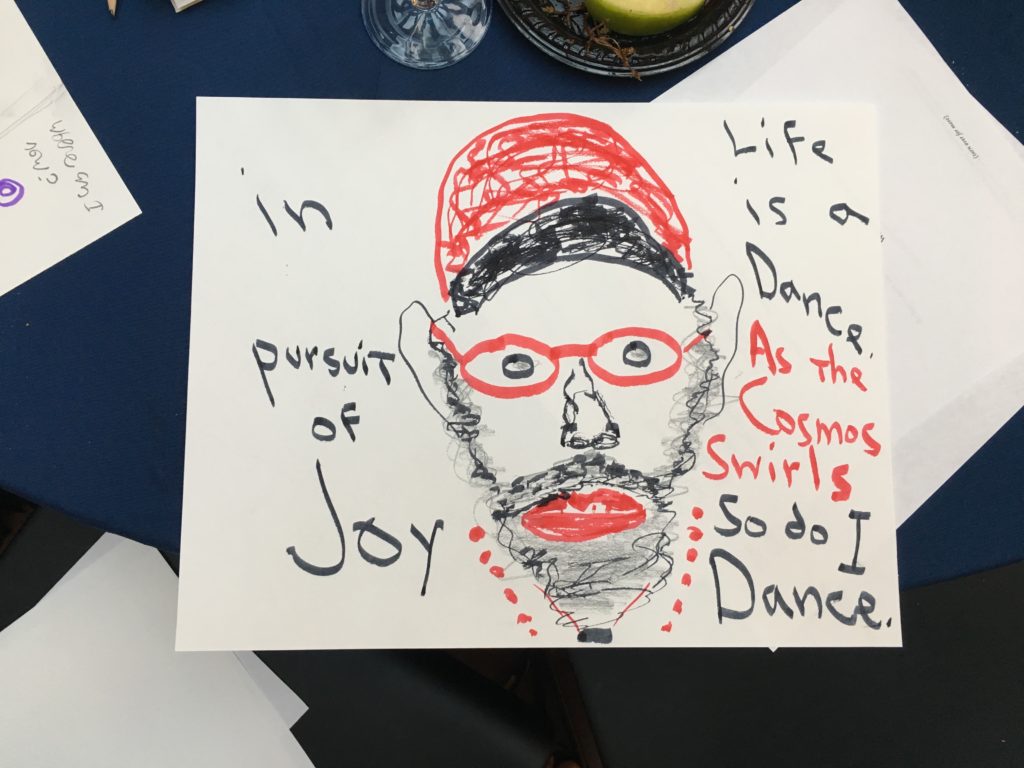
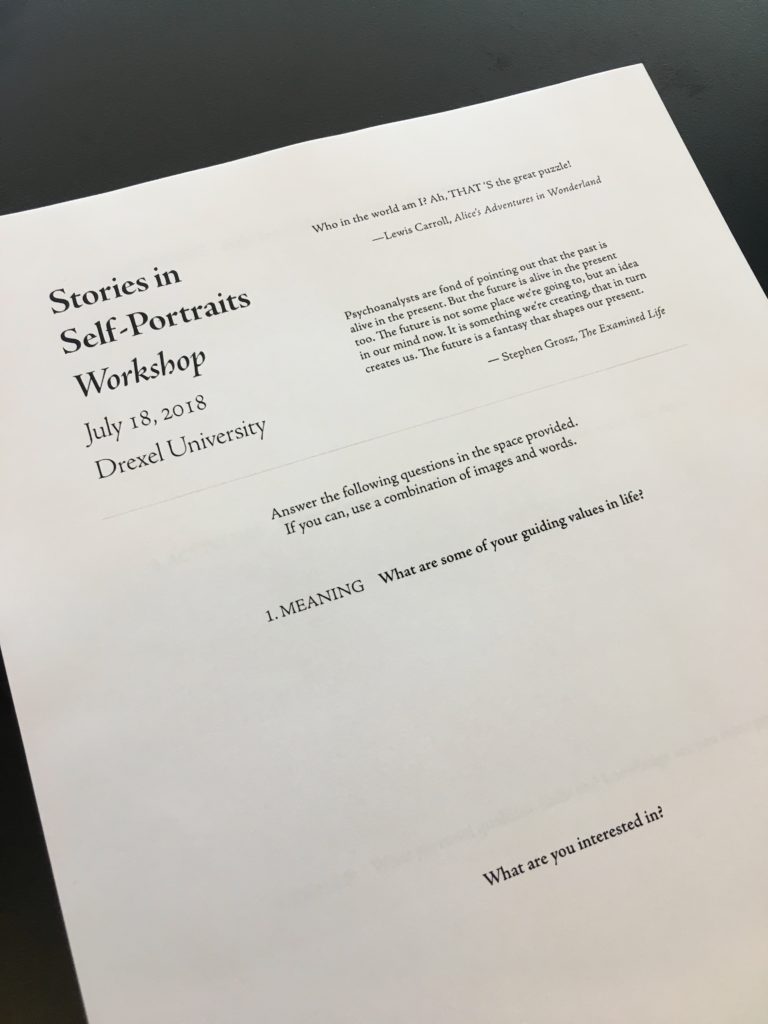
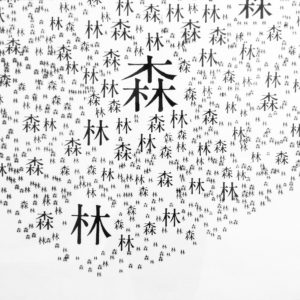
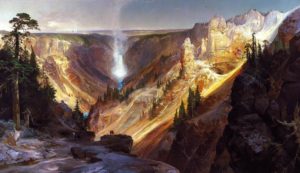 The first document is a painting done in 1871 by Thomas Moran depicting the Grand Canyon of the Yellowstone. The work was done while Moran was a guest artist on a geographic survey. Moran’s work showed the beauty and scale of the Yellowstone region more effectively than other descriptions, such that Moran’s work was decisive in the United States passing the National Parks Act in 1872, forming Yellowstone National Park and setting the stage for other regions in the United States—and other countries—to be preserved as national parks.
The first document is a painting done in 1871 by Thomas Moran depicting the Grand Canyon of the Yellowstone. The work was done while Moran was a guest artist on a geographic survey. Moran’s work showed the beauty and scale of the Yellowstone region more effectively than other descriptions, such that Moran’s work was decisive in the United States passing the National Parks Act in 1872, forming Yellowstone National Park and setting the stage for other regions in the United States—and other countries—to be preserved as national parks.